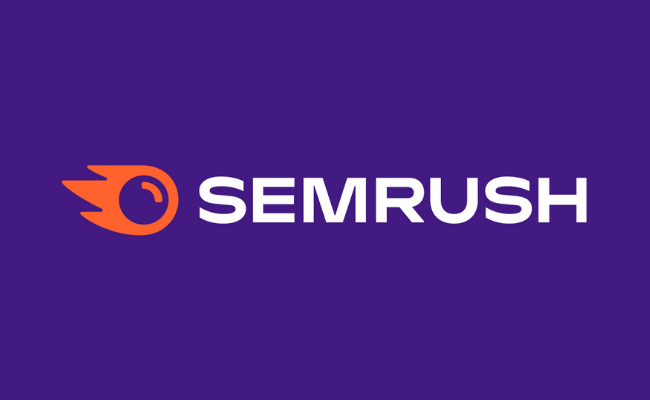You’re Doing It Wrong: How to Use Long-Tail Keywords to Gain Traffic
Businesses need to gain an online presence nowadays, and search engine optimization has been the most affordable and effective method. If you want maximum results, it’s best to aim for long-tail keywords. They’re much more convenient to rank for than shorter search terms.
A long-tail keyword also has a higher chance of leading many people to your website. Even better, it doesn’t require you to write a lengthy article. In other words, you gain more results with less effort, so why not apply it to your online marketing strategy?
Before you can do this, we will have to talk about a long-tail keyword. After that, we will elaborate on this SEO term further by explaining its benefits for businesses. We will discuss the methods and tools you need to apply long-tail keywords to your content.
Overview of long-tail keywords

Most people define a long-tail keyword as three or more words that people usually check on search engines. They often think the term “long-tail” refers to the keyword length.
Contrary to popular belief, it relates to statistics. If you graph the monthly search volume of keywords with the number of search queries, you’ll get a “long-tail” pattern.
You have a new cryptocurrency exchange platform, and you want to generate online traffic. Using words like “cryptocurrency” and “bitcoin” will have a lot of searches every month.
However, they’re too broad, so people may head to various unrelated content before clicking your homepage. What if you change it to “block brane cryptocurrency exchange platform?”
It has more than three words, so it fits the supposed definition of a long-tail keyword, right? While that relates directly to your website, people are unlikely to input the specific name of your new platform.
That’s why you have to aim for the sweet spot. Your long-tail keyword should have enough terms to lead your website, but it must relate to something in-demand.
These qualities describe the true definition of a long-tail keyword. If you plot a graph of the monthly search volume and the number of search queries, it should be in the middle.
Remember that there are two types of long-tail keywords: supporting and topical. The former relates to broad topics, so they’re more difficult to rank than topical keywords.
On the other hand, a topical long-tail keyword contains terms specific to a particular topic. Such words are much easier to rank for since you won’t have many competitors aiming for them.
Marketing benefits of long-tail keywords
People can perform SEO for free, making it an affordable and effective way to rank high on search engine results. Yet, it’s best to aim for the proper keyword on your first try.
That way, you would ensure that you get results as soon as possible, and you’ll avoid spending more time fixing your website. What’s more, it lets you take advantage of two benefits.
First, long-tail keywords resemble how people usually search for stuff on the internet. Let’s take the Gotrax GKS Electric Scooter for Kids as an example. Here is its detailed Amazon listing:
“Gotrax GKS Electric Scooter for Kids Age of 6-12, Kick-Start Boost and Gravity Sensor Kids Electric Scooter, 6” Wheels UL Certified E Scooter”
Would anyone put all those words on the Google Search box without copying and pasting from Amazon? Of course, not! Instead, people would likely search “electric scooter for kids.”
Similarly, your online content should rank for a long-tail keyword that sounds like a standard question from a regular person. Google will find it easier to match with relevant search queries.
Second, long-tail keywords increase the chances of gaining conversions. In other words, you’re more likely to close a sale if you aim for lengthy search terms.
Let’s say you search for the term “hybrid vehicle.” This word has so much ambiguity since this could relate to electric vehicles or even electric scooters. What if you look for the term “plug-in hybrid car?”
Google could then narrow the search to specific models, such as the 2022 Ford Escape SUV. This tendency is excellent news for Ford since this increases the likelihood that someone would click on that particular vehicle.
Once that happens, their marketing team can work on convincing potential customers to finalize their purchases. Your content can also provide these results by aiming for a long-tail keyword!
SEO benefits of long-tail keywords
We just discussed how long-tail keywords could help your marketing strategy. Now, let’s talk about how it can facilitate search engine optimization.
The first advantage of this type of search term is that you have fewer people aiming for them. You can’t say the same with broad terms like “smartphone” count as short-term keywords.
Websites can discuss these words in numerous ways, such as defining them or listing examples. As a result, general terms can yield millions upon millions of search terms.
That’s the number of competitors you’ll have for short-tail keywords. Meanwhile, long-tail keyword phrases refer to specific topics, reducing the number of websites aiming for them.
You’ll have an easier time ranking for its Google searches. This result is another factor that makes long-tail keywords important for a marketing strategy.
According to data, roughly 68% of online activities begin with Google searches. Out of all the related searches, 75% of them don’t look past the first page.
Specific long-tail keywords allow you to appear on top of Google’s search results, more likely to get clicks. There’s another reason why aiming for relevant long-tail keywords is ideal.
If you have a lot of competitors, you might have to post a lot of content for one topic. As a result, the number of websites that could match your intended keyword increases.
Alternatively, you may have to revise your content multiple times to increase its search traffic. These methods cost a lot of money, time, and effort.
If you aim for long-tail queries, your content may rank high on Google search results for a long time. As a result, you could gain results months or even years after posting your content.
Ranking for long-tail keywords means less competition. You’ll have an easier time ranking for related keywords while minimizing costs.
Finding long-tail keywords
For keyword research, long-tail ideas come from Google Autosuggest. Many SEO experts recommend this method, but is this truly effective?
The answer lies in its purpose. Autosuggest is a Google keyword tool that lets you see popular queries. Type a word on the search box, revealing a drop-down list of related searches.
Check their search volumes, and you’ll see that people looked them up several times. However, these are often the most challenging keyword ideas. The same goes for other keyword research tools.
For example, Soovle and Answer The Public derive keyword suggestions from Google Autosuggest. Similarly, they will show the long-tail keyword ideas with the highest difficulty scores.
Search keyword suggestions with Ahrefs.

Photo Credit: ahrefs.com
What should you use for long-term keyword research, then? It’s good to invest in paid tools like the Ahrefs Keywords Explorer. Unlike free tools, it goes beyond broad keyword searches.
Keywords Explorer shows you thousands of long-tail keywords, and you can filter them according to KD or keyword difficulty. This tool is ideal for businesses with little to no domain authority.
The filtered results can give you a list of keyword ideas that are easy to rank for, so you can start building your online presence. After getting your batch of keywords, it’s time to check your competitors.
You’re still trying to beat other websites even though you’re aiming for low-KD search words. Fortunately, Site Explorer from Ahrefs will let you see their target keywords.
It’s as simple as typing a competing website into the keyword research tool and heading to the Organic keywords report. This feature will show the long-tail keywords that it is using.
Do the same for five to ten other competitors, and you’ll have enough long-tail keyword variations to keep you occupied for months. You can start using these Ahrefs tools by subscribing to the Lite plan for $99 a month.
Visit online forums like Reddit.

Photo Credit: www.internetmatters.org
After that, it’s time to leave the paid and free tools and visit online forums. You can find many websites where random people discuss various topics.
Reddit and Quora are the most popular ones, so they’re great platforms for long-tail keyword research. Start with a short-tail keyword related to your field, such as “cryptocurrency.”
These sites have a filter, so select the one that lets you see the trending topics. Let’s say the top search query was “UST stablecoin.” It would help if you now input that keyword into the Ahrefs Explorer.
You might find that it’s a long-term keyword with low difficulty, so you can start ranking for it. If your topic is for a niche audience, you might have to enter online niche forums.
The great thing about this online technique is that forums have insightful discussions that can provide long-tail keyword variations. Still, this is a tedious process.
You’ll have to spend some time reading online forums that can span hundreds of responses. After that, you will still have to analyze those long-tail keywords using tools like Keywords Explorer.
Long-tail keyword research tools
Numerous paid and free tools can help find long-term keywords. After reading about Ahrefs Site Explorer and Keywords Explorer, it’s easy to assume you don’t need other tools.
If you want the maximum results, you will have to utilize every method available. What’s more, Google has tools to help you find long-tail keywords, yet they’re free to use.
There are too many options, so we will only discuss four of them. Take a look at the following list to see how they can help you rank high on search engines:
- Google Trends
- Google Search Console
- SEMRush
1. Google Trends

Photo Credit: gpsmember.com
We’ll start this list with one of the best tools for searching long-tail keywords. Google Trends lets you see how many times people have searched specific terms.
It lets you find long-tail keywords worldwide or within a particular country. The Trends app can even show you which regions look for that keyword.
Google Trends lets you view related topics and queries so that you can find new ideas for your SEO strategy. This tool is excellent for beginners, but it’s insufficient for experienced users.
2. Google Search Console

Photo Credit: seo-hacker.com
This tool lets you find long-tail keywords from your existing websites. As you use these terms, you may notice some of your pages falling into the 3rd page of search results or beyond.
You may also see that you rank for long-tail keywords unintentionally. The Google Search Console may come in handy in this case. This platform is free to use for anyone with a Google account.
Once you have an account, follow these steps:
- Log on to it, then choose the Performance option in the left-hand menu.
- Scroll down to the Queries tab.
- Click the Position section so that GSC can sort the list by “Position.”
- Change the number of rows to “500.”
- Scroll down until you see positions 10 to 15.
- Look at the long-tail keywords that belong to those ranks.
- Find desired keywords in the Google Keyword Planner.
- See if you can find your site’s related keywords. If you find one, click on it.
- Select the “pages” tab.
Now, you can see the page on your site that ranks for a specific long-tail keyword. Google Search Console is a nifty tool, but it’s still not enough for veteran SEO experts.
3. SEMRush

Photo Credit: www.semrush.com
There’s another paid tool that helps in finding long-tail keywords. SEMRush provides several details such as keyword difficulty, competitors, and suggestions.
This tool facilitates your long-tail keyword strategy since it provides you with many ideas. Another great thing about SEMRush is that it informs users of keyword intent.
Search engines like Google have advanced to such a degree that they can determine how a writer uses specific keywords. In turn, it can help you create SEO content.
Additionally, it comes with the SEO Writing Assistant that guides you as you write content. It will show the keywords you’ve included and your ranking so that you can ensure quality every time.
You can start using SEMRush by paying $119.95 every month for the Pro plan. Fortunately, you can try it free before committing to a paid subscription.
Develop a content strategy
Before you write content with your new keywords, you must create a plan first. Ask yourself the following questions for your SEO strategy:
- How will your content target each step of your sales funnel?
- What makes your product-focused content different from other types, such as informational content?
- How will you distribute the long-term keywords throughout your websites?
- How will you create content that takes advantage of the latest trends?
- What can you do to keep up with the changing trends?
These don’t cover all the factors to consider when making a content strategy. You may find additional ones that relate to your industry or goals.
Read More: The 7 Best SEO Practices For Mobile
Start writing the content.
Once you have a strategy, it’s time to implement it by writing content. Find a way to optimize for a topic cluster instead of just a single theme. Let’s take the term “blockchain” as an example.
It’s not a good idea to create one piece of content that tackles this general term. Instead, you could post several that cover variations such as “blockchain in education” or “public blockchains.”
You should also make sure the keywords appear naturally in your content. Google is surprisingly good at figuring out if you’re trying to rank by padding keywords!
The content should also match your target audience, and the corresponding sales funnel stage. Let’s say you chose crypto-traders for the interest stage of your new NFT platform.
You could post blogs about NFT marketplaces and mention your brand as a great example so that you can spark curiosity for your brand. Also, you can cater to people eager to learn details about the latest crypto products.
Related Articles
Final thoughts
Long-term keywords are a great way to start your online content strategy. It lets you cover interesting topics that people search for on Google and similar websites.
These terms can help you increase conversions for your websites while keeping the costs down. Various tools can facilitate using long-tail keywords, but it will still take time.
Fortunately, digital marketing agencies like LeadAdvisors can cover all your SEO needs. Click here to see how it can assist your current campaign.
FAQs
What can you consider as a long tail keyword?
Contrary to popular belief, long-tail keywords don’t just contain three or more words. They are phrases that tackle specific topics, so they limit competition and keyword difficulty.
What is a good long-tail keyword?
A long-tail keyword should have at least three words or more as a rule of thumb. However, they should be specific enough to have fewer websites ranking for them.
Why are long-tail keywords better?
They limit the number of competitors you have, so it’s much easier to rank for them. As a result, this could reduce the costs of your SEO marketing strategy.







